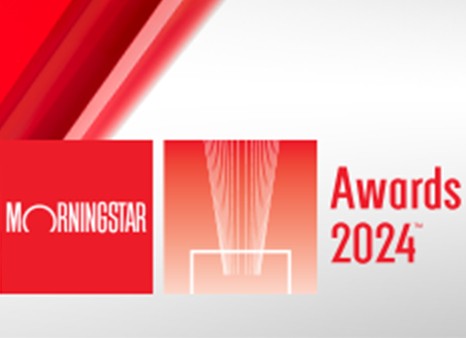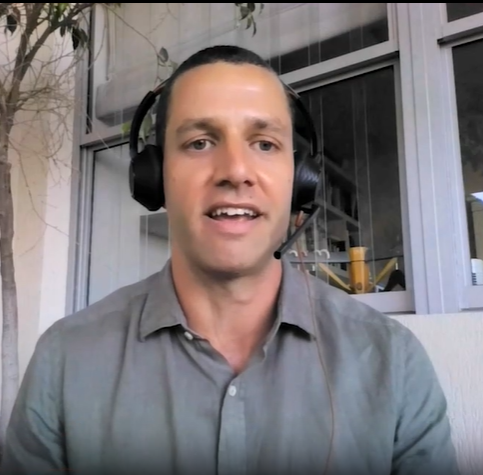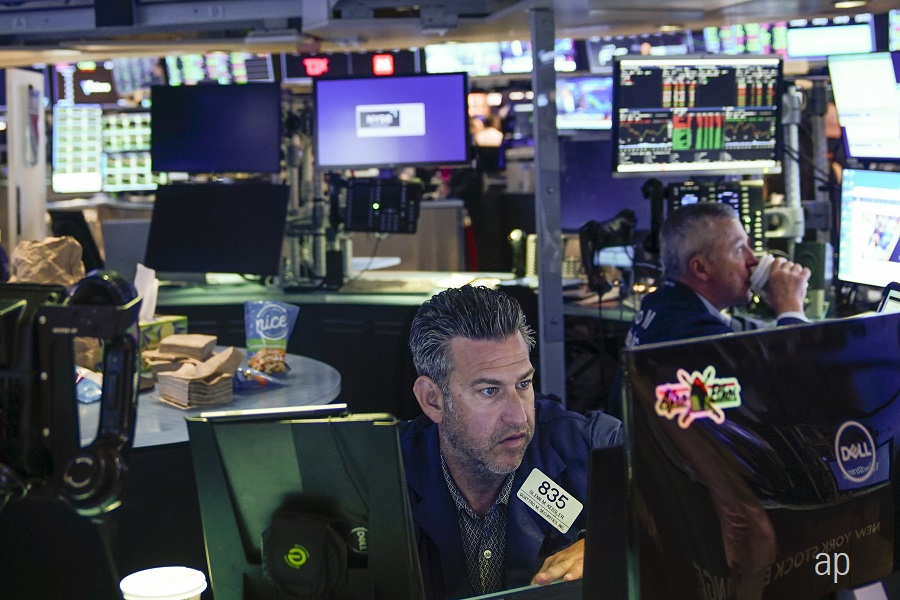Twitter Morningstarin palvelussa: TWTR
Jason Stipp: I'm Jason Stipp for Morningstar. Investors are abuzz about the Twitter IPO. But behind the hype of a big company going public, what do the fundamentals say?
Rick Summer, who will be covering Twitter for Morningstar, is here to offer his insights.
Thanks for joining me, Rick.
Rick Summer: Sure thing.
Stipp: You've had a chance to look at some of Twitter's financials, released … ahead of the IPO. What are their plans for monetizing their user base? Can you give us a little bit of color around how they will actually be making money?
Summer: Today, about 90% of revenues come from advertising, so it's very traditional. We look at companies like Facebook, like Google, traditional advertising. That's the tradition in one sense of the word.
I think in the other sense of the word, we've actually seen the type of advertising they have put forth. Five years ago, Twitter was around, but not making money, not really generating a lot of revenue. They have created three different advertising products that they put in front of users today: Promoted Trends, Promoted Tweets, and Promoted Accounts, and each of those have different pricing dynamics.
Most of their revenue comes from Promoted Tweets, so users can pay to actually promote an individual tweet into your tweet stream. It's just a way of paying for placement, and that has … generated significant revenue for them.
It's important to think about what's next. They will clearly have new advertising products. We need to remember, through the lens of Facebook, Facebook has been very successful in launching new advertising products, such as Mobile Application Installs or Mobile Newsfeed. We would expect someone that has a captive audience, and knows something about the audience, to continue to be able to innovate and offer new ad products.
Stipp: Would you say that they are just scratching the surface of what their revenue potential could be, given that we could see innovation in the kinds of ads that they are able to serve?
Summer: Absolutely. And I think this is a bit of an industry thesis as well. We have the same sort of modeling with Facebook, [with respect to] thinking about their ability to grow the advertising revenue per user.
It takes a lot of different forms. You could be pushing content out to other websites and embedding advertising there. New advertising formats, like video advertising. So it's not all just about more advertising. It should be more consumption, and … new ad products come along with that.
Stipp: And of course, the other piece of having more advertising is having more users or more eyeballs, pageviews, or uniques. How is the growth of Twitter's user base looking?
Summer: We're seeing growth slow, and it's slowing across most major social networks at the same time. And I think the question is, is this slowdown permanent, or is this something that they really recover from? They are still really growing at very healthy rates, but slowdowns are always concerning.
You are asking the right question, which is, the most important aspect of Twitter is how big is this network going to be? The way that we've constructed our evaluation, we believe in our base case that they can actually grow to about 1 billion users over 10 years. So, roughly about half the size of what we believe Facebook will be at that time period.
The biggest challenge is, right now, it's arguably early adopters--people that understand the platform. [Twitter] users … are pretty avid. About half the users are going there on a daily basis. But the biggest challenge you always hear is, it's very complicated, I don't understand it, I don't know how to do digest that content. [Twitter] has to be able to get over that hurdle--we think that they will--but they have to be able to get over that hurdle to continue this stratospheric growth.
Stipp: If we do see revenue growth from more users in different types of ads, what about profitability? Are they profitable now? And if not, when do you think they will be profitable?
Summer: On a GAAP business or an accounting basis--we like to look at GAAP and accounting--they're not profitable. You have to realize a few things: There is a base level of research and development, R&D, spending that has to occur. There is a base level of capex that needs to occur to be able to invest in servers and data center capacity, and ensure that this service is always up, so that it is dependable as a source of content, whether it'd be news or entertainment. That base level of infrastructure is still less than what a Facebook would put in or less than what a Google would put in. So, we would fully expect them to not be profitable today. We'd fully expect them to actually have to invest heavily today.
What we look at more long-term is, what are normalized operating margins, and normalized profitability? We think that they can get to a mid-20% to high-20% range on an operating income basis, and from that percentage level, it becomes quite interesting.
Today, we'd absolutely prefer them to forgo profitability, so that they're innovating in new ad formats and evangelizing their platform, so advertisers know how to measure the success of their advertising. And then, obviously, just the core infrastructure--making sure that their service is actually working as it's supposed to work.
Stipp: That kind of profitability potential would suggest that this company has a moat. Where is their moat rating coming in--those competitive advantages? We know Facebook is a wide-moat company you also cover. Is Twitter a wide moat?
Summer: No. It's a point of distinction. I think that they can be there. There are a lot of signals where we would be more favorably inclined to give them a wide moat, but I think that the slowdown is a concern today.
They are a narrow-moat rated company, primarily because it's a unique distribution platform that is not replicable at all.
We look at LeBron James being able to talk to his fans and users, or the band One Direction feeling like they're actually having a conversation with people, to really breaking news. [Friday,] there was a shooting at LAX Airport, and that was a source of breaking news. And traditional news sources are actually quoting Twitter and using that as their source of information. That uniqueness is huge. It keeps pulling in users, and that's the reason people continue to use it every day.
I think that the biggest question, once again, is, how does that normalized profitability shake out? We think returns on capital look very attractive. They could easily throttle down investment today, say we're as big as we want to be, and they could probably make it an attractive business. But that's not the way to go. We think they actually can generate better returns on capital by investing quite heavily today.
Stipp: So it's possible that we could see this company become a wide-moat company at some point?
Summer: Absolutely. We also have another rating. It's a trend rating. [Twitter has] a positive moat trend, because we think those dynamics are actually improving, not moving in the other direction. In fact, if we did see an acceleration in users, and we started to see signs that [Twitter is] crossing over into that mass market, I think we would certainly revisit our moat rating at that time.
Stipp: Let's talk about valuation. We have a sense now of the range where this IPO will appear. You also have a fair value estimate. You've done a forecast. What's the difference between the market price and your fair value estimate?
Summer: I've come out at $26, and our methodology … is based more on a scenario analysis. When you have a company with this wide of a dispersion of possible outcomes, we really look at upside-downside scenarios, base-case scenarios, to really think about, what is this business worth, and as an investor, what risk are you willing to take and what are you willing to pay for it.
Our base case scenario actually drives a $20 fair value, but we felt it was strongly important to realize that the upside was significantly greater than the downside--the risk of capital loss--for a couple of reasons. One, in our downside scenario, we really assume much more tepid growth here, where they really only reach 400 million users. So not even doubling their user base, or close to doubling their user base, over 10 years. We think that's pretty easily achievable.
But if they were to achieve that, they could certainly drive profitability. But we think the uniqueness of that platform is such a compelling asset, we think Google or Facebook or a company of that ilk would inevitably step in and buy it. And we think the floor in that valuation is $15 a share.
On the upside, though, if we do cross into mass market, if this becomes as ubiquitous as Facebook, if they could actually not get to 1 billion users, but 1.9 billion users … they don't drive the same level of ad revenues per user, clearly, not as big as Facebook … but we come up with a price of $50. So using those three scenarios on our weighted average probability scale comes out with a $26 fair value.
We think it's extremely important to recognize that upside, because oftentimes, particularly for these growth companies, the upside is not often recognized.
We certainly have seen other scenarios. We would argue today that Facebook, the upside is recognized too readily versus what the downside is, and we would put LinkedIn at that same camp. We think both of those names are overvalued today.
Stipp: You mentioned a few of the things that Twitter needs to do to capture some of that upside, as far as the growth of its users and the kinds of advertising revenue it can generate.
Are there any other risks, though, beyond not meeting those [milestones] that should be on investors' radars that could make that downside more of an issue?
Summer: There is one business risk and one stock risk. I think on the stock side, we talked about this--and continue to talk about this a lot with Facebook. In many ways, the business itself and the business results were very tied to their ability to generate new advertising product that advertisers can look at and actually start to step up their spending in a meaningful way.
We can look back to how Google grew. They just placed more ads, the more searches people were doing. It's very orderly growth from a business like that. We don't have orderly growth from companies like Facebook and companies like Twitter. We think that there are going to be times when they really accelerate revenue growth, and we think there are going to be times they decelerate revenue growth, simply based on new ad products, perhaps new subscribers coming on from syndication methods. There are lots of different [reasons] that we have this less-predictable growth curve. That should create a lot of volatility around the stock price. So we always highlight that, because [there could be] great opportunities to sell if you're a holder because it gets overvalued, and great opportunities to step in when there's too much fear.
On the business side, we still have to recognize, as we always do, that these ad formats still have some fuzzy metrics around them. Certainly advertisers are feeling better about how they calculate ROI, but it's not as clean as, I clicked on something, put it into a shopping cart, and bought it. We have … some direct-response advertising, but some brand-building advertising as well.
Now through that lens, let's look at the most giant advertising pie that's out there. We have TV, where you don't know [which viewers are] doing what and when they're doing it. The attribution is more than fuzzy from a television environment. We still believe there's this massive shift that continues to come from offline to online. I'm not necessarily calling TV out as that source of revenue; I think we have print being the most obvious one. But that underlying trend is still there, and Twitter is going to be a benefactor of that, as will the other companies.
Stipp: Rick, fantastic research on this very important and well-watched IPO. Thanks for joining me today.
Summer: Great. Thanks.
Stipp: For Morningstar, I'm Jason Stipp. Thanks for watching.






.jpg)














